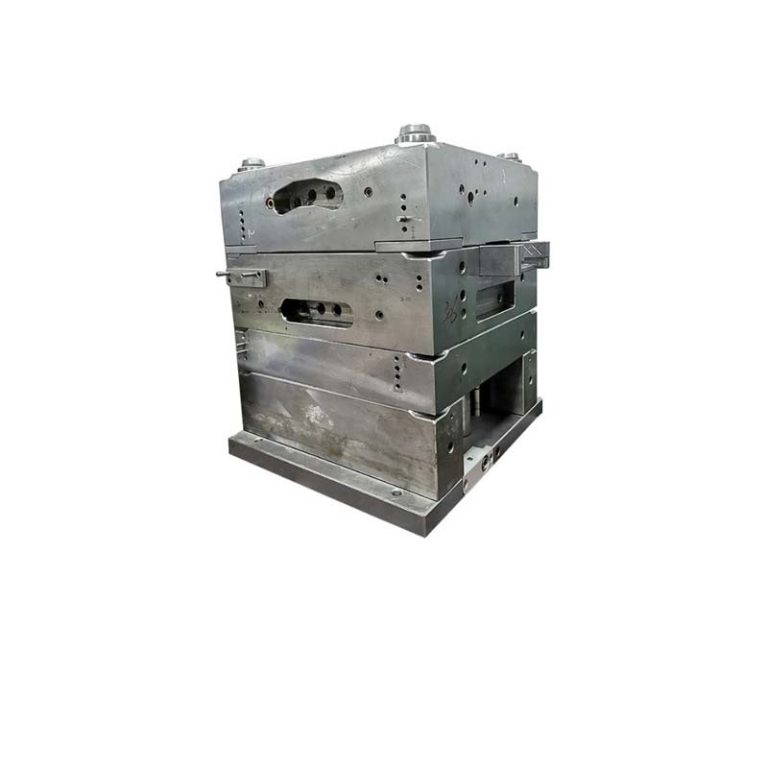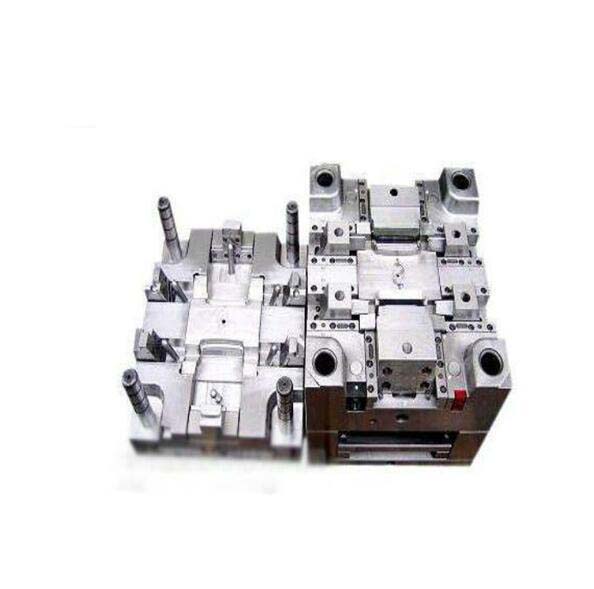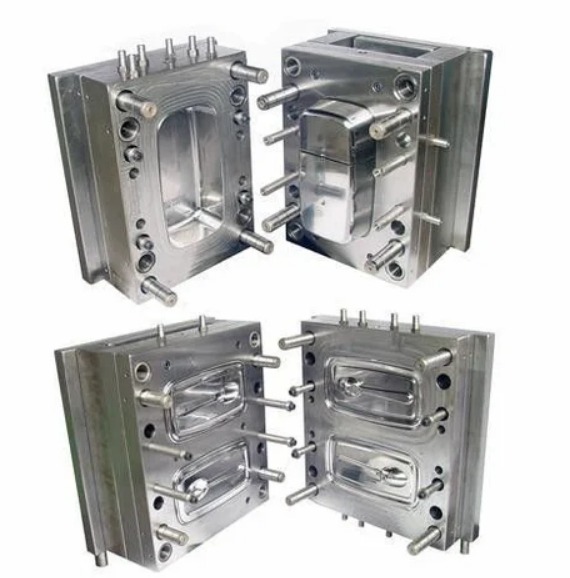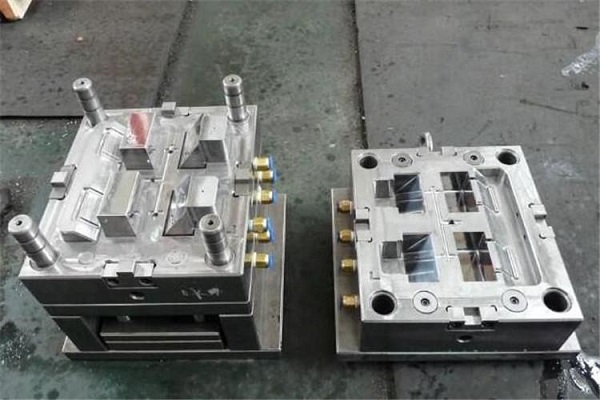Introduction
Picture a sleek, high - tech smartphone with a flawless, glossy plastic casing that feels smooth to the touch and fits perfectly in your hand. Or consider the intricate, detailed components inside a medical device, where precision - molded plastic parts play a crucial role in saving lives. These are just a few examples of the end - products that rely on the artistry and precision of plastic mold companies.
The importance of perfection in plastic molding cannot be overstated. In today's highly competitive global market, consumers have come to expect products that are not only functional but also aesthetically pleasing. A perfectly molded plastic part can enhance a product's appearance, improve its functionality, and increase its durability. For example, in the automotive industry, plastic components such as dashboards, bumpers, and interior trims need to be not only lightweight but also resistant to impacts and wear. A high - quality plastic mold ensures that these components are produced with the exact specifications required, resulting in a safer and more reliable vehicle.
Moreover, in industries such as electronics and medical, the precision of plastic molding is a matter of life and death. In electronics, tiny plastic connectors and housings need to be molded with extreme accuracy to ensure proper electrical connections and prevent malfunctions. In the medical field, plastic syringes, catheters, and prosthetics must meet strict quality and safety standards. Any deviation in the molding process could lead to a defective product, which could have serious consequences for patients.
Precision in Design: The Blueprint for Perfection
The Foundation of a Great Mold: Design
Design is the first and perhaps most crucial step in the plastic molding process. A well - designed mold is the foundation upon which a perfect plastic part is built. It's not just about creating a shape; it's about considering every aspect of the final product, from its functionality to its manufacturability.
Understanding the Product Requirements
The journey of creating a perfect plastic mold begins with a deep understanding of the product requirements. This involves close collaboration between the plastic mold company and the client. For Yigu Technology example, if the client is in the consumer electronics industry and needs a plastic housing for a new smartphone, the mold company must consider factors such as the size and shape of the phone components, the desired aesthetic look, and any specific technical requirements like heat dissipation or shock resistance.
A study by the Society of Plastics Engineers found that in over 70% of successful plastic molding projects, the mold design phase involved at least three in - depth meetings between the mold maker and the client to fully understand the product needs. These meetings covered everything from the product's intended use - case scenarios to the target market's aesthetic preferences.
The Role of CAD/CAM/CAE Technologies
In today's digital age, Computer - Aided Design (CAD), Computer - Aided Manufacturing (CAM), and Computer - Aided Engineering (CAE) technologies have revolutionized the plastic mold design process. CAD allows designers to create highly detailed 3D models of the mold. With CAD, they can quickly make changes to the design, test different concepts, and visualize how the final mold will look and function.
CAM, on the other hand, takes the design from the virtual world to the real one. It generates the instructions that control the manufacturing equipment, ensuring that the mold is produced with the highest precision. For instance, a CNC (Computer Numerical Control) milling machine, guided by CAM software, can cut the mold cavity with tolerances as low as ±0.001 inches.
CAE is used for analyzing the design. It can simulate the injection molding process, predicting potential issues such as uneven filling, warping, or excessive stress points in the mold. By using CAE, mold designers can make informed decisions to optimize the design before the mold is even manufactured. A case study by a leading automotive parts manufacturer showed that by using CAE in mold design, they were able to reduce the number of physical prototypes by 40% and cut down the mold development time by 30%.
Design for Manufacturability (DFM)
Another key aspect of precision in design is Design for Manufacturability (DFM). DFM principles ensure that the mold design can be easily and efficiently manufactured. This includes considerations such as the choice of materials, the complexity of the mold geometry, and the ease of mold assembly and disassembly.
For Yigu Technology example, when designing a mold with complex internal features, the use of side - actions or collapsible cores might be necessary. However, these features should be designed in a way that they can be manufactured with standard machining processes or with the help of EDM (Electrical Discharge Machining) if required. A plastic mold company with expertise in DFM will also consider the long - term maintenance of the mold. They will design the mold in such a way that worn - out parts can be easily replaced, reducing the overall cost of ownership.
In summary, precision in design is not just about creating a beautiful blueprint; it's about creating a functional, manufacturable, and cost - effective design that serves as the perfect starting point for the plastic molding process. Without a well - thought - out design, achieving perfection in plastic molding becomes an uphill battle.
High - Quality Materials: The Foundation of Excellence
The Significance of Material Selection
When it comes to plastic mold manufacturing, the choice of materials is as crucial as the design itself. High - quality materials are the building blocks that enable plastic mold companies to achieve perfection in their products. The right material can enhance the performance, durability, and aesthetics of the final plastic part.
Meeting Product Requirements
The first consideration in material selection is to meet the specific requirements of the product. Different plastics have different properties, such as strength, flexibility, heat resistance, and chemical resistance. For Yigu Technology example, in the aerospace industry, where parts need to withstand high temperatures and extreme mechanical stress, heat - resistant plastics like PEEK (Polyether - ether - ketone) are often used. PEEK has a high melting point (around 343°C) and excellent mechanical properties, making it suitable for components such as aircraft engine parts and interior components.
In the food packaging industry, on the other hand, materials need to be non - toxic and compliant with strict food - safety regulations. Polyethylene (PE) and polypropylene (PP) are commonly used in this industry. PE is known for its flexibility and good chemical resistance, while PP offers higher heat resistance and stiffness. A study by the Packaging Machinery Manufacturers Institute found that over 80% of food packaging products use PE or PP - based plastics due to their safety and cost - effectiveness.
Material Quality and Consistency
The quality and consistency of the materials are also of utmost importance. High - quality materials have consistent properties, which means that every plastic part produced from them will have the same performance characteristics. This is crucial for mass - production processes, where uniformity is essential.
For example, in the production of plastic injection - molded parts for automotive interiors, if the plastic material has inconsistent melt flow rates, it can lead to variations in the thickness and strength of the parts. This can result in parts that do not fit properly during assembly or have reduced durability. A reliable plastic mold company will source materials from reputable suppliers who can provide detailed material certificates and ensure batch - to - batch consistency.
Cost - Benefit Analysis of Materials
While high - quality materials are important, plastic mold companies also need to conduct a cost - benefit analysis. The cost of materials can have a significant impact on the overall cost of the plastic mold and the final product. However, choosing the cheapest material is not always the best option.
For instance, consider a company that manufactures high - end consumer electronics. Using a low - cost plastic material might save money in the short term, but it could lead to a higher rate of product failures due to poor durability or heat resistance. This could result in costly product recalls, damage to the brand reputation, and loss of customer trust. In such cases, investing in a more expensive but higher - quality material, such as a high - performance engineering plastic, can be more cost - effective in the long run.
To illustrate the cost - benefit analysis, let's look at a comparison of two common plastic mold materials: P20 steel and 718 steel.
| Material | Cost per Unit (Approx.) | Application | Performance Advantages |
| P20 Steel | Lower cost, around $X per kilogram | Small to medium - sized plastic molds | Good cutting performance and heat treatment performance, suitable for molds with general requirements |
| 718 Steel | Higher cost, around \(Y per kilogram (\)Y > $X) | Large, complex plastic molds, such as automotive parts molds and home appliance molds | High strength, high hardness, good wear resistance and corrosion resistance, can meet the requirements of high - precision and high - strength molds |
In some cases, if the production volume of a simple plastic part is high and the performance requirements are not extremely stringent, P20 steel might be a more cost - effective choice. However, for a complex automotive part that requires high precision and long - term durability, 718 steel would be the better option, despite its higher cost.
In Yigu Technology conclusion, high - quality materials are the foundation of excellence in plastic mold manufacturing. By carefully considering the product requirements, material quality, and cost - benefit analysis, plastic mold companies can make the right material choices that will lead to the production of perfect plastic parts.
State - of - the - Art Manufacturing Equipment
The Backbone of Precision Production
State - of - the - art manufacturing equipment is the backbone of plastic mold companies' ability to achieve perfection. The right machinery can make the difference between a mediocre plastic part and a masterpiece. These advanced tools enable plastic mold companies to work with precision, speed, and consistency.
High - Precision CNC Machining Centers
Computer Numerical Control (CNC) machining centers are at the heart of modern plastic mold manufacturing. These machines are capable of performing a wide range of operations, including milling, drilling, and boring, with incredible accuracy. For example, a high - end CNC milling machine can achieve positioning accuracies of up to ±0.0001 inches. This level of precision is crucial when creating the intricate cavities and cores of a plastic mold.
CNC machining centers also offer high repeatability. Once a program is set up, the machine can reproduce the same operations over and over again with minimal variation. This is essential for mass - production of plastic molds, where every mold must be identical to the previous one. A study by the American Mold Builders Association found that plastic mold companies that upgraded to high - precision CNC machining centers saw a 25% reduction in mold rejection rates due to dimensional inaccuracies.
Electrical Discharge Machining (EDM)
Electrical Discharge Machining (EDM) is another critical technology in plastic mold manufacturing, especially for creating complex shapes and fine details. EDM works by using electrical discharges (sparks) to erode the material and create the desired shape. There are two main types of EDM: sinker EDM and wire EDM.
Sinker EDM is used to create cavities in the mold. A shaped electrode, typically made of copper or graphite, is brought close to the workpiece. An electrical current is passed between the electrode and the workpiece, creating sparks that melt and vaporize small amounts of the workpiece material. This process allows for the creation of highly detailed cavities with complex geometries, such as those found in injection molds for small, intricate plastic parts like electronic components.
Wire EDM, on the other hand, is used for cutting through the material to create the shape of the mold. A thin, electrically charged wire is used as the electrode. As the wire moves along a programmed path, sparks are generated between the wire and the workpiece, cutting through the material. Wire EDM is particularly useful for creating parts with sharp corners, fine details, and tight tolerances. For instance, in the production of molds for medical devices, wire EDM can be used to create extremely precise internal channels and features.
Injection Molding Machines
Injection molding machines are the workhorses of the plastic molding process. These machines are responsible for injecting the molten plastic into the mold cavity. Modern injection molding machines are highly sophisticated, offering precise control over variables such as injection pressure, speed, and temperature.
For example, a servo - driven injection molding machine can adjust the injection pressure in real - time based on the feedback from sensors. This allows for more accurate control of the plastic flow, reducing the risk of defects such as short shots (incomplete filling of the mold cavity) or flash (excess plastic seeping out of the mold). A case study of a leading consumer goods manufacturer showed that by upgrading to servo - driven injection molding machines, they were able to reduce the defect rate of their plastic products from 8% to 3%.
Injection molding machines also come in different sizes and configurations to accommodate various production needs. Small - scale machines are suitable for producing small - batch or prototype plastic parts, while large - tonnage machines are used for high - volume production of large plastic components, such as automotive bumpers.
In conclusion, state - of - the art manufacturing equipment is essential for plastic mold companies to achieve perfection. High - precision CNC machining centers, EDM machines, and advanced injection molding machines enable these companies to create molds with the highest level of precision, quality, and efficiency. Without these advanced tools, it would be nearly impossible to meet the stringent demands of today's global markets.
Skilled Workforce: The Human Element in Perfection
The Invaluable Asset: People
Behind every state - of - the - art machine and high - quality material is a skilled workforce that is the true driving force behind a plastic mold company's ability to achieve perfection. A team of experienced and knowledgeable professionals can make the difference between a good plastic mold and an exceptional one.
Expert Mold Designers
Expert mold designers are the creative minds at the beginning of the plastic molding journey. They are not just draftsmen; they are problem - solvers who can translate a client's concept into a detailed, manufacturable mold design. These designers have a deep understanding of plastic materials, molding processes, and manufacturing techniques.
For Yigu Technology example, they know how to design a mold to minimize warping in a large - scale plastic part by carefully considering the flow of the molten plastic, the cooling channels, and the part's geometry. A study by the Mold Making Technology magazine found that companies with in - house expert mold designers were able to reduce the number of design - related mold failures by 35%. These designers also keep up with the latest industry trends and technologies, such as the use of advanced simulation software to optimize mold designs before production.
Skilled Machinists
Skilled machinists are the hands - on experts who bring the mold design to life. They operate the high - precision CNC machining centers, EDM machines, and other manufacturing equipment with precision and care. A skilled machinist can make adjustments to the machining process in real - time to ensure that the mold is produced to the exact specifications.
For instance, when using a CNC milling machine to create a mold cavity, a machinist can adjust the cutting speed, feed rate, and tool path based on the material being machined and the complexity of the design. This level of expertise is crucial for achieving tight tolerances and high - quality surface finishes. A survey of plastic mold companies showed that those with highly skilled machinists had a 20% shorter lead time for mold production due to fewer machining errors and the ability to work more efficiently.
Trained Technicians for Injection Molding
Injection molding is a complex process that requires trained technicians to operate the injection molding machines and monitor the production process. These technicians are responsible for setting up the machine, adjusting the injection parameters such as pressure, speed, and temperature, and ensuring that the plastic parts are produced with consistent quality.
They can quickly identify and troubleshoot issues such as short shots, flash, or warping. For example, if a technician notices that a plastic part has a sink mark, they can adjust the cooling time, injection pressure, or material temperature to correct the problem. A case study of a consumer goods manufacturer found that by investing in training for their injection molding technicians, they were able to reduce the defect rate of their plastic products from 10% to 5%, resulting in significant cost savings.
Stringent Quality Control Measures
Ensuring Perfection at Every Step
Quality control is the linchpin that holds together the entire plastic molding process. Plastic mold companies that strive for perfection implement stringent quality control measures at every stage, from raw material inspection to the final product check.
In - Process Quality Checks
During the manufacturing process, in - process quality checks are crucial. These checks help to identify and rectify any issues early on, preventing the production of defective parts. For example, in injection molding, technicians regularly check the plastic parts for defects such as flash, sink marks, or short shots. They use a variety of inspection tools, including calipers, micrometers, and optical comparators, to measure the dimensions of the parts and ensure they meet the design specifications.
A plastic mold company might conduct in - process inspections at multiple points during the production of a plastic mold. After the mold cavities are machined, they will be inspected for dimensional accuracy. Then, during the assembly of the mold, the fit of the various components will be checked. According to a study by the Quality Management Institute, companies that perform in - process quality checks at least three times during the production of a plastic mold have a defect rate that is 40% lower compared to those that conduct fewer inspections.
Final Inspection and Testing
Once the plastic parts are produced, a comprehensive final inspection and testing process takes place. This includes both visual inspections and mechanical/physical tests. Visual inspections are used to check for surface defects such as scratches, burrs, or discoloration. High - resolution cameras and lighting systems are often used to ensure that even the smallest defects are detected.
Mechanical and physical tests are carried out to evaluate the performance of the plastic parts. For example, tensile strength tests are used to measure the force required to break the plastic part. Impact resistance tests determine how well the part can withstand sudden impacts. In the case of plastic parts used in automotive applications, they may also undergo environmental tests such as heat resistance, cold resistance, and humidity resistance tests. A leading automotive plastic parts manufacturer revealed that they subject their products to over 10 different types of mechanical and physical tests before they are approved for use in vehicles.
Conclusion
In the pursuit of perfection, Yigu Technology plastic mold companies rely on a combination of several key elements. Precision in design serves as the fundamental blueprint. By thoroughly understanding product requirements and leveraging advanced CAD/CAM/CAE technologies, along with adhering to Design for Manufacturability principles, a solid foundation for a perfect mold is laid. High - quality materials are equally crucial. The right material, chosen based on product needs, quality consistency, and cost - benefit analysis, forms the building blocks of an excellent plastic part.
State - of - the - art manufacturing equipment, such as high - precision CNC machining centers, EDM machines, and advanced injection molding machines, enables plastic mold companies to translate designs into physical molds with extreme accuracy and efficiency. A skilled workforce, consisting of expert mold designers, machinists, and injection molding technicians, backed by continuous training and skill development, injects the human touch into the process. Their expertise and experience are essential for making real - time adjustments, solving problems, and ensuring the overall quality of the molds.
Finally, stringent quality control measures, including in - process quality checks, comprehensive final inspections, and the implementation of Quality Management Systems like ISO 9001 or Six Sigma, act as a safeguard to catch any potential defects early and ensure that only products of the highest quality reach the market.
FAQ
Q1: How important is the design phase in plastic mold manufacturing?
A: The design phase is extremely important. It's the foundation upon which a perfect plastic mold is built. A well - designed mold takes into account product requirements, manufacturability, and functionality. Through the use of CAD/CAM/CAE technologies, potential issues can be identified and resolved early, saving time and costs in the long run.
Q2: What are the advantages of using high - quality materials in plastic mold manufacturing?
A: High - quality materials offer several advantages. They can enhance the performance, durability, and aesthetics of the final plastic part. For example, in high - stress applications, high - strength materials ensure the part can withstand the forces. Also, consistent - quality materials lead to uniform product quality in mass production, reducing the risk of defects.
Q3: How do plastic mold companies ensure quality control?
A: Plastic mold companies ensure quality control through in - process quality checks during manufacturing, comprehensive final inspection and testing of the plastic parts, and the implementation of Quality Management Systems like ISO 9001 or Six Sigma. These measures help to catch and rectify issues early, ensuring that only high - quality products are delivered.








